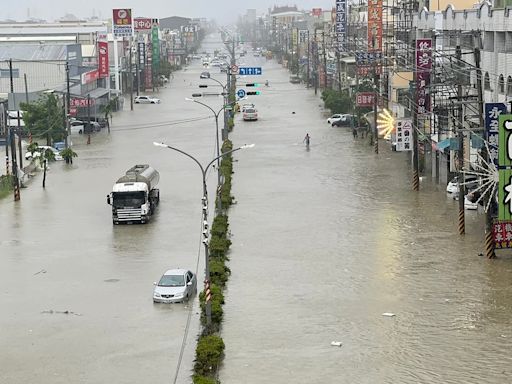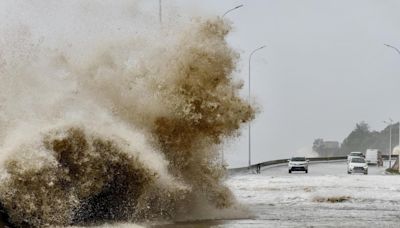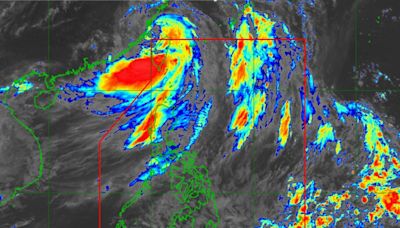Search results
The high seas are the areas of the oceans that are not controlled by any country. Learn more about the meaning, usage and history of this term with examples from the Cambridge Dictionary and Corpus.
Learn the meaning and usage of the phrase "on the high seas", which refers to the open waters of an ocean or sea outside any nation's jurisdiction. Find examples, synonyms, and related idioms in this online dictionary.
Mar 6, 2023 · The high seas are the expanse of ocean covering almost half the world, where marine life faces threats from climate change, overfishing and mining. A historic UN treaty would create a framework to conserve and manage the high seas, but it still needs adoption and ratification by nations.
- Territorial Sea
- Inland Waters
- Contiguous Zone
- Continental Shelf
- Continental Slope
- Exclusive Economic Zone
- High Seas
- Regulations and Other Aspects Concerning High Seas
- International Waters vs High Seas – What Is The difference?
- Can You Drill For Oil in International Waters?
The territorial sea is the area adjacent to a coastal state’s land territory. It extends up to 12 nautical miles (22.2 kilometres) from the baselines, which are the low-water lines along the coast. Within this zone, coastal states exercise full sovereignty, including the right to regulate and enforce laws on customs, immigration, and pollution cont...
Inland waters refer to the bodies of water landward of the baseline, such as bays, rivers, lakes, and canals that are wholly or partially under the jurisdiction of a coastal state. Coastal states have complete sovereignty over these waters, including the right to establish and enforce laws and regulations. The extent of inland waters is determined ...
The contiguous zone is an area adjacent to the territorial sea, extending up to 24 nautical miles (44.4 kilometres) from the baselines. In this zone, coastal states have limited control to prevent and punish violations of their customs, fiscal, immigration, and sanitary regulations. However, the jurisdiction of coastal states in the contiguous zone...
The continental shelf refers to the seabed and subsoil of the submarine areas that extend beyond the territorial sea, up to 200 nautical miles or beyond, where the natural prolongation of a coastal state’s land territory exists. Coastal states have sovereign rights over the exploration and exploitation of natural resources, both living and non-livi...
The continental slope is the seabed area beyond the continental shelf, where the depth rapidly increases towards the deep ocean floor. Although the continental slope is not defined as a separate maritime zone, it holds geological and ecological significance. Coastal states may have specific rights and responsibilities related to scientific research...
The EEZ is a zone adjacent to a coastal state’s territorial sea, extending up to 200 nautical miles (370.4 kilometres) from the baselines. Within the EEZ, coastal states have sovereign rights and jurisdiction over natural resources, both living (such as fish and other marine life) and non-living (such as oil, gas, and minerals). Coastal states also...
The high seas, also known as international waters, are the areas of the world’s oceans that are beyond the jurisdiction of any particular state. These waters are open to all states and are governed by the principle of “freedom of the high seas.” States and individuals enjoy freedoms such as navigation, fishing, overflight, and laying of submarine c...
Where do international waters start?
International waters, also referred to as the high seas, are areas of the world’s oceans that are beyond the jurisdiction of any particular country. They exist beyond the territorial waters and contiguous zones of coastal states. The starting point of international waters is generally recognised as the point where a nation’s territorial sea ends, usually 12 nautical miles from the baseline of a coastal state. This principle is enshrined in the United Nations Convention on the Law of the Sea (...
How far offshore are international waters?
The commonly accepted distance for international waters is 12 nautical miles (approximately 22.2 kilometres) from the coastal baseline of a nation. This distance is based on the customary international law principle of the territorial sea, which grants coastal states certain rights and jurisdiction over a defined area extending from their coastlines. The exact measurement may vary depending on national legislation and bilateral agreements.
International waters distance
As mentioned earlier, international waters begin beyond the 12 nautical mile limit from the coastal baseline of a nation. These waters continue until the exclusive economic zone (EEZ) boundary, which typically extends up to 200 nautical miles from the coastal baseline, or until the outer limit of the continental shelf, whichever is further. The specific boundaries and limitations of the EEZ and continental shelf are determined based on UNCLOS provisions and relevant bilateral or multilateral...
The terms “international waters” and “high seas” are often used interchangeably, as they both refer to the areas of the world’s oceans beyond the jurisdiction of any particular state. However, the technical distinction lies in their legal definitions. “High seas” specifically refers to the waters beyond national jurisdiction, while “international w...
The exploration and exploitation of natural resources, such as oil and gas, in international waters are subject to specific rules and regulations. UNCLOS provides a legal framework for the exploitation of non-living resources in the Area, which refers to the seabed and subsoil beyond the limits of national jurisdiction. It establishes the Internati...
The high seas are not lawless. Well, not completely. According to international law, a maritime country extends outward some distance from its shoreline. During the 20th century several attempts to develop an international “law of the sea” have been made under the aegis of the United Nations.
- John P. Rafferty
High seas, in maritime law, all parts of the mass of saltwater surrounding the globe that are not part of the territorial sea or internal waters of a state. For several centuries beginning in the European Middle Ages, a number of maritime states asserted sovereignty over large portions of the high.
Mar 30, 2023 · The high seas absorb carbon dioxide from the atmosphere–estimates land at around 30% of all carbon emissions–blunting the impact of climate change on land and sea alike.






